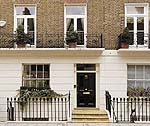Property price pace slowing
Property prices are still growing but the pace is beginning to slow down, according to a new report


The average price for a first time buyer in London is now approaching £250,000, according to a report released today by Nationwide. While the capital is leading the English housing market, every region has seen price increases of 5% or more in the past 12 months. London remains the clear leader in the English housing market, with an annual house price inflation of 15.7%. The buoyancy of employment and income growth from the City as well as a stream of foreign buyers in prime areas is driving demand. About half of all buyers of houses worth over £2m are thought to come from overseas. Off all the boroughs, Islington and Camden stand out for strongest growth. Price inflation generally decreases the further one gets from the capital. The regions surrounding the capital appear to be benefiting from the ripple effects of a strong London economy and housing market. The Outer Metropolitan and Outer South East regions are both seeing a double-digit pace of annual price growth. These effects, however, begin to fizzle out once one reaches East Anglia, the South West or the West Midlands, where price growth is in the single digits. However, the quarterly report is beginning to record a slow down in the rate of inflation. Looking ahead, economic fundamentals and foreign capital inflows will continue to lend support to prices in London. Nonetheless, it seems reasonable to assume that affordability constraints will result in a deceleration of price growth later in 2007. Increasing interest rates ? which many now expect to reach 6% by the end of the year ? should also contribute to a cooling of the market. Even if house price inflation in the capital decelerates, affordability will remain stretched, particularly for first-time buyers. Nationwide's chief economist adds: 'At a national level, the annual rate of house price growth increased slightly from the first quarter, rising from 9.5% to 10.2%. This masked a slowing of the quarterly pace of growth for the second quarter in a row, from 2.3% to 2.1%. In fact, the acceleration of annual house price inflation was in part driven by an interim period of relative weakness in the second quarter of 2006. Even London and Northern Ireland ? the two most buoyant regional markets ? saw the quarterly pace of house price inflation slow.' Sample of area percentage change in the past 10 years Northumberland 177% Cheshire 182% Cambridgeshire 182% Suffolk 209% Northamptonshire 198% Cornwall 265% Dorset 200% Somerset 215% Wiltshire 190% West Sussex 223%
Sign up for the Country Life Newsletter
Exquisite houses, the beauty of Nature, and how to get the most from your life, straight to your inbox.
-
 Six rural properties with space, charm and endless views, as seen in Country Life
Six rural properties with space, charm and endless views, as seen in Country LifeWe take a look at some of the best houses to come to the market via Country Life in the past week.
By Toby Keel
-
 Exploring the countryside is essential for our wellbeing, but Right to Roam is going backwards
Exploring the countryside is essential for our wellbeing, but Right to Roam is going backwardsCampaigners in England often point to Scotland as an example of how brilliantly Right to Roam works, but it's not all it's cracked up to be, says Patrick Galbraith.
By Patrick Galbraith